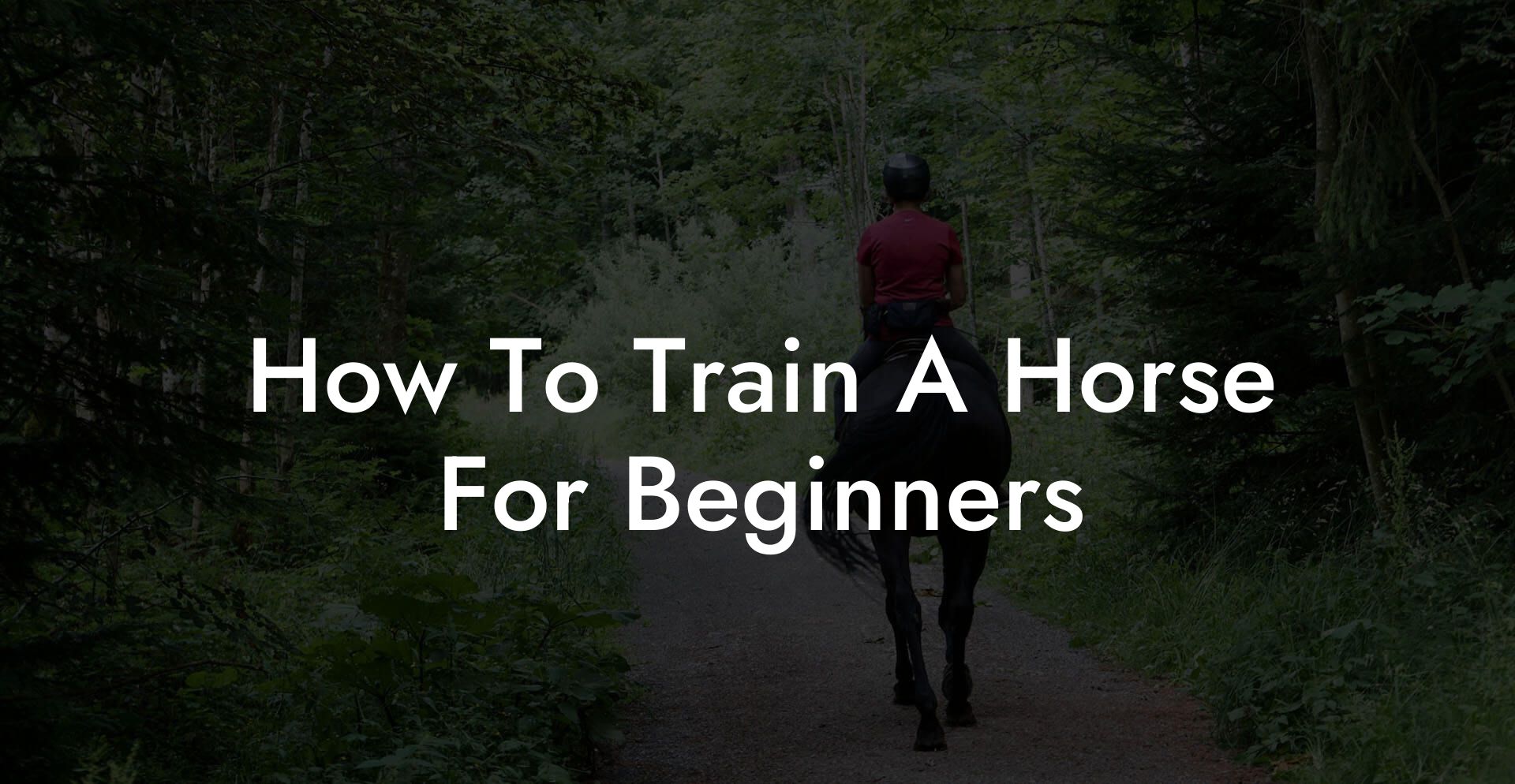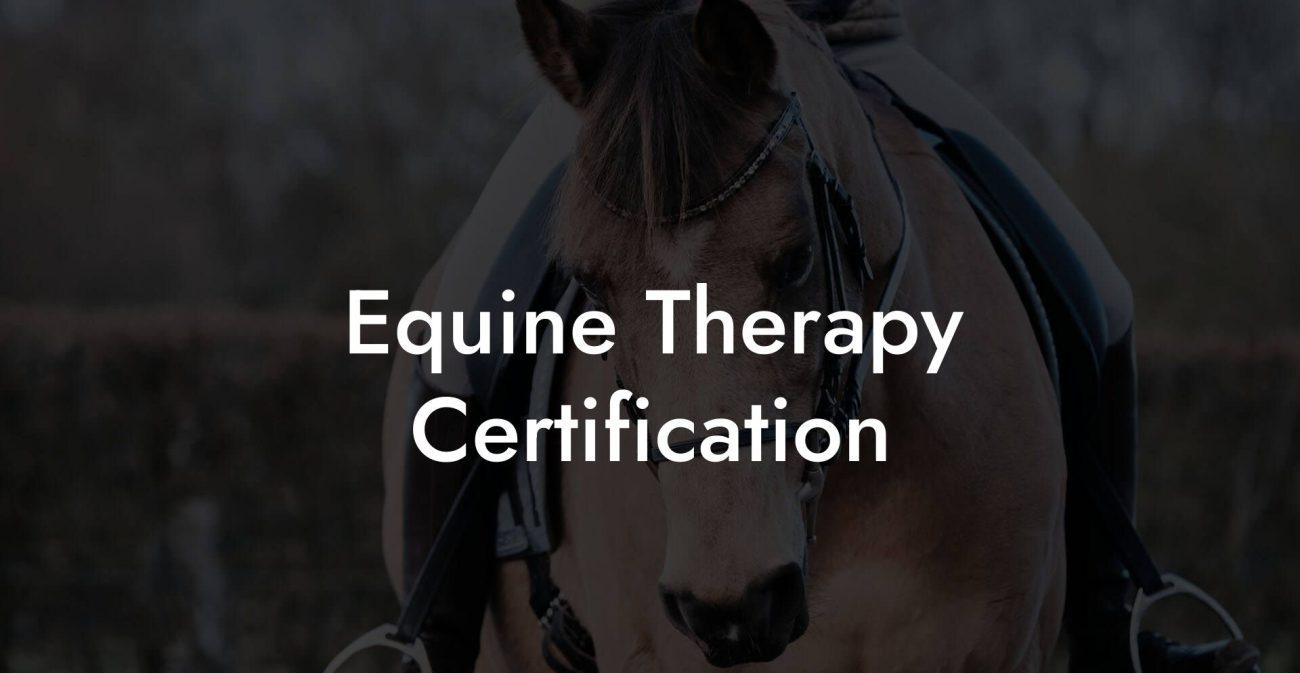Ever thought about turning your trusty steed into the ultimate BFF and workout partner? training a horse isn’t just for cowboys in old movies, this dynamic process is a blend of art, science, and a whole lot of heart. Whether you’re a Gen-Z dreamer or a millennial with a taste for adventure, this guide is your backstage pass to everything you need to know about training a horse for beginners. Get ready to dive into a world where patience meets passion, where every clop of hooves and every gentle nudge of a rein becomes a step toward a deeper bond and epic adventures.
Quick Links to Useful Sections
- Understanding the Basics: Getting to Know Your Horse
- Setting the Stage: Preparing Yourself and Your Horse
- Gear Up Right
- Safety First, Always
- Mental Preparedness
- Horse Training Fundamentals: Laying Down the Foundations
- The Power of Consistency
- Positive Reinforcement: Rewards Over Reprimands
- Clear Communication and Simple Commands
- Building Trust: The Art of Communication with Your Horse
- Beyond Words: Reading Body Language
- Empathy and Patience
- The Role of Consistent Cues
- Techniques and Tips: Step-by-Step Horse Training Strategies
- Step 1: Groundwork Mastery
- Step 2: Desensitization Techniques
- Step 3: Introducing Basic Commands
- Step 4: Incorporating Ridden Work
- Step 5: Advanced Training Techniques
- Cultivating Patience: Embracing the Learning Curve
- Nurturing the Bond: Daily Horse Care Essentials
- Grooming and Hygiene
- Feeding Right: A Nutritional Approach
- Regular Exercise and Turnout
- health Check-Ups
- Overcoming Common Training Challenges
- Dealing with Hesitancy and Fear
- Managing Distractions
- Overcoming Frustration, For Both of You
- Resources and Community Support: Your Next Steps
- Expanding Your Horizons: Advanced Strategies and Fun Challenges
- Incorporate Fun Challenges
- Explore New Techniques
- Integrating Technology: Digital Tools for Modern Horse Training
- Tracking Progress with Apps
- Wearable Technology
- Mindset Makeover: Embracing the Joy of Training
- Frequently Asked Questions About Training a Horse
- Your Journey to Becoming an Equine Training Pro
Understanding the Basics: Getting to Know Your Horse
Training a horse begins long before you even pick up the reins, it starts with understanding the magnificent creature right in front of you. Horses are social animals that communicate through body language, sounds, and subtle cues. Learning their behavior is like discovering the secret language of a majestic, four-legged friend.
Whether you're stepping into a stable for the first time or revisiting rainy-day dreams of open pastures, you'll find that knowledge about horse behavior, body language, and natural instincts is key. Think of it as reading the manual to your new electronics, but instead of batteries and screens, you're unlocking secrets to build trust, communication, and a balanced partnership.
In essence, understanding a horse’s daily rhythms, natural instincts, and preferred modes of interaction lays the foundation for successful training. When you recognize that a horse’s ears can swivel to catch even the slightest sound and that a flick of the tail might be a polite “back off,” you’re already ahead of the game.
Keywords to keep in mind: horse behavior, beginner horse care, understanding horses, equine communication.
Setting the Stage: Preparing Yourself and Your Horse
Before you can become the ultimate equine whisperer, it’s crucial to set up a safe, welcoming, and well-equipped environment for both you and your horse. This stage is all about preparing the ground for success and ensuring that training sessions are smooth, effective, and fun.
Gear Up Right
Just like you wouldn’t jump out of bed without your phone, you shouldn’t start training without the right gear. Start with the basics: a quality halter, a lead rope, and a well-fitted bridle. Investing in sound equipment isn’t about flashiness, it’s about ensuring comfort and safety for your equine partner.
Exploring local tack shops or even browsing online stores can help you discover items designed with both functionality and style in mind. Look for modern, ergonomic designs that are loved by riders and trainers alike. And remember, a well-cared-for set of gear can make all the difference in creating a positive training atmosphere.
Safety First, Always
When working with a large animal, safety is the number one priority. Equip yourself with gloves, wear proper footwear, and consider investing in a helmet if you're venturing into riding. If you’re training outside, check the arena or pasture for hazards such as uneven ground or obstacles. This isn’t just about avoiding boo-boos, it’s about building a space where confidence and respect grow naturally.
Keep in mind that a safe environment is the first step toward fostering trust. When the setting is secure, both you and your horse can focus on the training instead of worrying about potential mishaps. It’s the ultimate win-win!
Mental Preparedness
A calm mind leads to a calm horse. Building mental resilience and a positive attitude is as important as having the right equipment. Consider a few minutes of mindfulness or a quick stretch before your training session. Shake off the stress, set clear intentions, and step into the arena with a spirit ready to connect.
Keywords: horse training gear, horse safety for beginners, horse training preparation, equine gear essentials.
Horse Training Fundamentals: Laying Down the Foundations
At the core of effective horse training is a clear understanding of fundamentals, techniques, exercises, and consistent routines that promote learning and trust. Think of these as the building blocks for a successful partnership.
For beginners, simplicity is key. You don’t need to be a master immediately; start with the basics, and let your skills grow along with your horse’s. Here’s a close look at the essential steps:
The Power of Consistency
Horses are creatures of habit. They thrive on routine. Establish a consistent training schedule where each session builds on the last. Whether it’s a quick 15-minute warm-up or a longer, more detailed session, repetition reinforces trust and helps convey the right messages.
Just like your morning coffee ritual, a regular training routine becomes both a habit and a signal that change is happening, gradually and steadily.
Positive Reinforcement: Rewards Over Reprimands
Forget the outdated notion that you need to be harsh or intimidating to train a horse. Modern methods lean heavily on positive reinforcement. Praise your horse with gentle pats, soothing words, or even a tasty treat. By associating good behavior with rewards, training becomes a mutually enjoyable experience.
Imagine your horse’s face lighting up at the sound of a treat bag or a soft “good job”, that’s the sweet sound of progress. It’s not just effective; it’s also infinitely more rewarding for both of you.
Clear Communication and Simple Commands
Horses aren’t born speaking human languages. Their understanding comes through body language and consistent commands. Use clear, simple signals with your hands, voice, and body positioning. Whether you’re teaching basic commands such as “stop,” “go,” or “trot,” clarity will help your horse learn faster.
Visual aids like target sticks or markers can also be incredibly useful during training sessions. These tools help reinforce the messages you’re conveying and offer a tangible focus for your horse’s attention.
Keywords: horse training fundamentals, positive reinforcement for horses, consistent horse training, beginner equine training tips.
Building Trust: The Art of Communication with Your Horse
At the heart of every successful training session is trust. Establishing a genuine connection with your horse goes far beyond knowing when to stop or go, it’s about creating a bond built on mutual respect, understanding, and empathy.
Beyond Words: Reading Body Language
Horses speak a silent language that’s just as expressive as words. Learn to read indications such as ear positions, tail movements, and subtle shifts in stance. When your horse’s ears are pinned back or its eyes wander, it might be signaling discomfort or distraction.
In these moments, pause, adjust your approach, and allow your companion a moment to recalibrate. This mindfulness not only prevents miscommunication but also deepens the trust between you.
Empathy and Patience
Every horse has its own personality, a unique blend of stubbornness, sensitivity, and charm. Embrace these qualities with a sense of humor and a generous dose of patience. Recognize that mistakes are part of the learning process; sometimes progress means taking two steps back to move one step forward.
By celebrating small victories and remaining calm in the face of setbacks, you’re not just training a horse; you’re nurturing a lifelong friendship.
The Role of Consistent Cues
Consistency in cues, whether it’s a verbal command or a hand gesture, helps eliminate confusion. Always try to use the same signal for each command. Over time, your horse will begin to associate those exact triggers with the corresponding action, making training sessions smoother and more efficient.
Keywords: equine communication, building trust with horses, horse body language, empathetic horse training.
Techniques and Tips: Step-by-Step Horse Training Strategies
Now that we’ve laid the groundwork, it’s time to dig into the nitty-gritty of training. From establishing basic commands to perfecting your riding skills, here are a few techniques and tips to take your horse training to the next level.
Step 1: Groundwork Mastery
Groundwork is the foundation upon which all other training is built. This stage involves teaching your horse basic manners, like leading, stopping, yielding, and overall responsiveness to your cues. Start with simple exercises in a quiet, distraction-free environment, gradually introducing new challenges as your horse gains confidence.
Groundwork isn't just preparation, it’s a quality bonding experience that cements your role as a calm, confident leader in your horse’s eyes.
Step 2: Desensitization Techniques
Horses are innately cautious creatures, and new objects or sensations can be stressful. Desensitization involves gradually introducing your horse to different stimuli, noises, objects, people, to lessen their natural fear response. Start with something small, like a plastic bag or a moving fan, and gradually work up to more challenging scenarios.
This process not only builds confidence but also teaches your horse that unexpected stimuli aren’t threats. Patience is key here: slow and steady wins the race.
Step 3: Introducing Basic Commands
Once groundwork and desensitization are in place, you can begin teaching basic commands. Start with fundamental cues:
- Walk: Use a gentle nudge and a soft, consistent command such as “walk on” to encourage forward movement.
- Stop: A firm yet kind verbal cue, reinforced through body language, lets your horse know when to halt.
- Turn: Guide your horse with intentional shifts in your body and light pressure on one rein to make smooth turns.
- Trot: As your horse gains confidence, encourage a slight transition into a trot with an upbeat tone and gentle pressure on the legs.
As you introduce these commands, reinforce each with praise, treats, or a few kind words. Each successful response builds a positive association, paving the way for more advanced techniques.
Step 4: Incorporating Ridden Work
Once your horse responds well on the ground, you’re ready to explore the world of ridden work. Begin in a quiet arena where distractions are minimal, and focus on basic riding skills like mounting safely, steering, and stopping. Integrate the cues from your groundwork to maintain consistency between on-ground and in-saddle communication.
Think of riding as an extension of your training, a dynamic dance where every cue, every shift of weight, and every breath matters.
Step 5: Advanced Training Techniques
As both you and your horse progress, consider introducing more advanced techniques such as lateral movements, transitions between gaits, or even trail riding challenges. These activities are not only fun but offer valuable opportunities to reinforce trust and refine your communication skills.
Keywords: horse training techniques, beginner horse training, equine desensitization, basic horse commands, advanced horse training tips.
Cultivating Patience: Embracing the Learning Curve
When it comes to training horses, patience isn’t just a virtue, it’s an absolute necessity. Every horse is unique, and learning happens at a pace that sometimes defies your best-laid plans. Embracing this learning curve with humor and flexibility makes the journey all the more enjoyable.
It’s okay if things don’t go as planned. A slip, a missed cue, or a moment of hesitance is part of the process. Celebrate the little breakthroughs and even the missteps, because each step is a building block toward a stronger, more understanding connection.
Remember: your horse may be a four-legged enigma now, but with consistent effort and genuine care, you’ll eventually unlock a partnership that is as rewarding as it is resilient.
Nurturing the Bond: Daily Horse Care Essentials
While training is vital, true mastery comes from holistic care. Daily equine care practices contribute enormously to both the physical and emotional well-being of your horse. Think of it like your favorite self-care routine: a mix of grooming, proper feeding, and, of course, plenty of love.
Grooming and Hygiene
Regular grooming sessions are a wonderful opportunity to bond with your horse while also keeping them clean and healthy. Brushing removes dirt, stimulates blood circulation, and gives you a chance to check for any injuries or unusual lumps. A calm, consistent grooming ritual reassures your horse and reinforces that you’re their trusted partner.
Feeding Right: A Nutritional Approach
A healthy horse is a happy horse. Feed your equine buddy a balanced diet that fits their energy levels and training intensity. From quality hay to specialized grains and occasional treats, your horse’s diet plays a critical role in muscle recovery and overall stamina.
Consider consulting a veterinarian or an equine nutrition expert if you’re unsure about the best diet for your horse. Knowing what to feed is as important as knowing what not to feed, because yes, horses can be as picky as we are!
Regular Exercise and Turnout
While training sessions are structured, allowing your horse free time in a safe pasture or arena supports natural movement and helps reduce stress. Adequate turnout encourages exercise that supplements your formal training routines.
health Check-Ups
Just as you might schedule regular doctor’s appointments, keep up with your horse’s veterinary check-ups. Routine exams ensure early detection of potential issues and help maintain a balanced, happy life.
Keywords: daily horse care, equine grooming, horse nutrition, regular exercise for horses, holistic horse care.
Overcoming Common Training Challenges
Even the most enthusiastic trainers encounter bumps along the road. From stubborn behavior to unexpected setbacks, training a horse can sometimes feel like decoding a particularly tricky meme. Here are a few common challenges and how to shrug them off like a millennial with a fresh outlook:
Dealing with Hesitancy and Fear
It’s not unusual for a young horse, or even an experienced one, to show signs of hesitation when confronted with something new. Patience, repetition, and a dash of humor can turn initial fear into curiosity. Approach new situations gradually, reinforcing positive experiences with treats or gentle words.
Managing Distractions
Horses are naturally curious creatures. A sudden noise, the flutter of a butterfly, or even the shadow of a passing cloud can derail a session. Choose a quiet training environment initially, then gradually introduce distractions as your horse’s focus strengthens.
Overcoming Frustration, For Both of You
Frustration happens, but it’s important to manage it with humor and a reminder that every setback is an opportunity to learn. If you sense your horse or even your own patience waning, take a break. A walk around the paddock or a few minutes of calm conversation can do wonders.
Keywords: common horse training challenges, managing horse distractions, equine training setbacks, overcoming training frustrations.
Resources and Community Support: Your Next Steps
When embarking on a horse training journey, you’re never really alone. There’s a vibrant community out there, online forums, local riding clubs, and social media groups, filled with trainers, enthusiasts, and experts who share their insights, experiences, and even the occasional hilarious anecdote.
Delve into YouTube channels dedicated to equine training, follow inspiring Instagram accounts for daily equine content, and consider joining groups on platforms like Facebook or Reddit where horse lovers trade tips and celebrate victories, big or small. Community support can be the secret sauce that transforms frustrating sessions into fun learning opportunities.
Aside from human support, there are plenty of apps and online courses designed to help beginners. These digital tools offer everything from daily training tips to video tutorials, making it easier than ever to fit horse training into your busy, digital lifestyle.
Whether you’re looking for in-person instruction or virtual mentoring, the wealth of resources available means that every question you have is likely already answered. And in this journey, every bit of advice counts!
Keywords: horse training community, equine training resources, online horse care tutorials, beginner horse training support, digital equine guides.
Expanding Your Horizons: Advanced Strategies and Fun Challenges
Once you’ve mastered the basics and built a strong bond with your horse, there’s a whole world of advanced training techniques waiting for you. Think of it as leveling up in your favorite video game, new challenges, cool tricks, and deeper connections are on the horizon.
Consider experimenting with advanced groundwork exercises that focus on lateral movements and intricate patterns. Try trail-riding adventures that combine navigation with real-time problem solving. These activities not only push the boundaries of your training routine but also keep the experience fresh and unforgettable.
Incorporate Fun Challenges
Challenge yourself and your horse with obstacle courses and timed drills. These activities improve agility, responsiveness, and balance while adding an extra dose of fun. Whether it’s weaving through cones or mastering a figure-eight, these challenges engage both body and mind.
Explore New Techniques
As you progress, consider exploring alternative training methods such as natural horsemanship. This approach emphasizes gentle persuasion over force, fostering an environment where your horse cooperates because they trust you completely, not because they’re afraid.
Keywords: advanced horse training, equine challenge courses, natural horsemanship techniques, equine agility drills, advanced equestrian skills.
Integrating Technology: Digital Tools for Modern Horse Training
In today’s digital age, even horseback riding gets an upgrade. From smartphone apps that track progress to wearable technology designed for horses, technology is making training more accessible and data-driven than ever before.
Tracking Progress with Apps
There are several mobile apps tailored to horse training that allow you to log training sessions, track improvements, and even set reminders for routine care activities. Integrating these digital tools into your daily routine can help you monitor your horse’s progress in a way that’s both practical and fun.
Wearable Technology
Emerging technology, such as smart halters and wearable sensors for horses, provides real-time data on vital signs, movement patterns, and even stress levels. Utilizing this tech not only sharpens your training insights but also ensures your horse remains in optimal health throughout the training journey.
Keywords: tech in horse training, horse training apps, wearable equine technology, digital horse care, modern equestrian tools.
Mindset Makeover: Embracing the Joy of Training
At the end of the day, training a horse isn’t about ticking boxes or sticking to a rigid schedule, it’s about enjoying the ride. Embrace the humorous missteps, the unexpected breakthroughs, and even those days when your horse seems to have a mind of its own.
Every training session is an opportunity to invest in an enduring relationship, to learn more about the incredible mind and body of your equine partner, and to enjoy a journey filled with growth, laughter, and yes, a few head-scratching moments.
With the right mindset, every challenge becomes a stepping stone to deeper understanding, more fun, and a bond that transcends the traditional owner/trainer dynamic. So, take a deep breath, smile at the quirks, and celebrate every little victory.
Keywords: horse training mindset, joy in horse training, training mindset for beginners, embracing equine training challenges.
Frequently Asked Questions About Training a Horse
Here are some common questions beginner trainers ask, along with clear, concise answers to help you establish a smooth and enjoyable training routine.
1. How long does it take to see progress when training a horse?
Every horse is unique, but you can generally expect to see noticeable improvements in their responsiveness and behavior within a few weeks of consistent, structured training.
2. What are the most important commands to start with?
Begin with basic cues such as “walk,” “stop,” “turn,” and “trot.” Mastering these fundamentals sets the stage for more advanced training later on.
3. Is positive reinforcement truly effective in horse training?
Absolutely! Horses respond exceptionally well to positive reinforcement methods. Rewarding good behavior helps build trust and encourages repeat performance.
4. How can I safely introduce my horse to new environments?
Gradually exposing your horse to new settings and distractions will help them acclimate. Start in a calm, controlled area before moving on to busier, more complex environments.
5. What should I do if my horse seems scared or hesitant?
Patience is key! Stop the exercise, provide reassurance, and reattempt the training session with gradual introductions to the source of fear. Consistent, calm handling usually overcomes hesitation.
6. Can I train a horse at home if I don’t have much space?
Yes, you can begin by focusing on groundwork and basic handling techniques in smaller spaces. When possible, incorporate longer sessions in a safe, open area.
7. Do I need a professional trainer right away?
Not necessarily. While a professional trainer can offer valuable guidance, many beginners learn successfully through online resources, community support, and persistent practice. Over time, you might consider professional input as your skills advance.
Keywords: horse training FAQ, beginner horse training questions, equine training tips, training a horse for beginners.
Your Journey to Becoming an Equine Training Pro
Training a horse for beginners isn’t just about perfecting commands or sticking to a routine; it’s about embarking on an adventure filled with discovery, growth, and a dash of humor. Every moment in the training arena, whether it’s a triumphant trot or a curious pause, is a step towards a partnership that’s as rewarding as it is transformative.
Embrace the process with a spirit of exploration and trust that every challenge is an opportunity to learn. We’ve covered everything you need, from understanding the basics of horse behavior and safety to advanced tips and community resources, to set you on the right track. Now, it’s time to put on your metaphorical riding boots and dive into the exciting world of horse training.
Remember, you’re not alone in this journey. With a supportive community, practical resources, and plenty of patience and humor, you’re well on your way to becoming an equine training pro. So saddle up, hit the arena, and enjoy the ride, because the adventure is just beginning.
Keywords: beginner horse training, equine training journey, training a horse guide, horse training for Gen-Z, millennial horse care.













